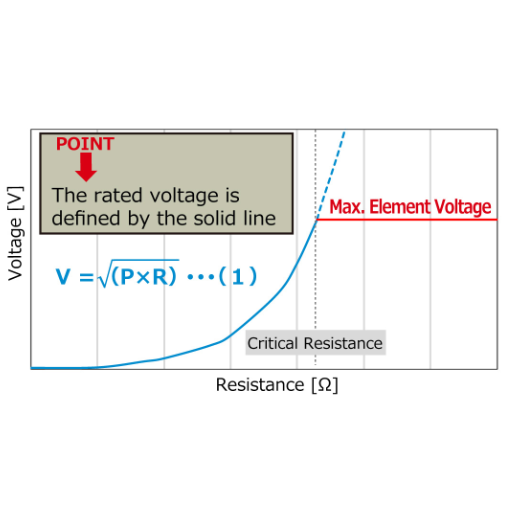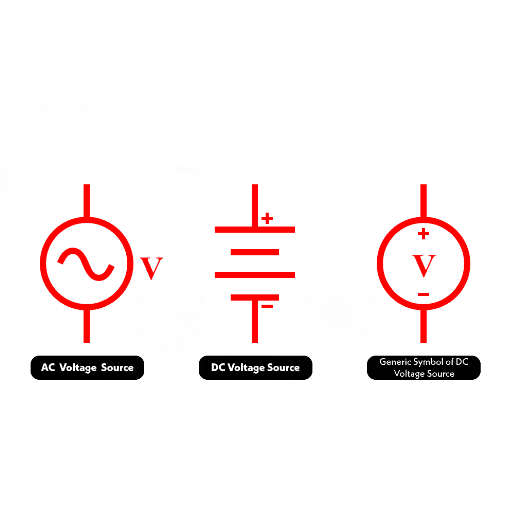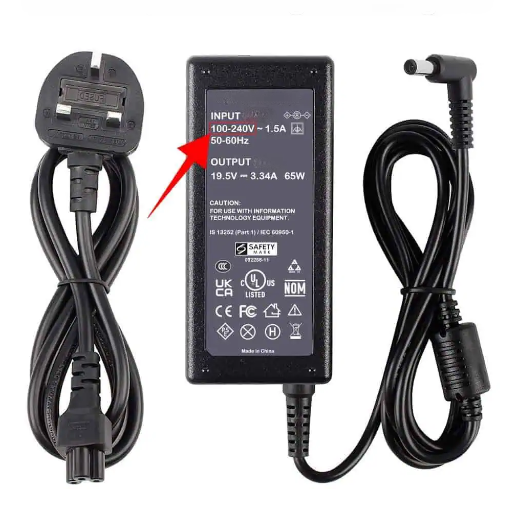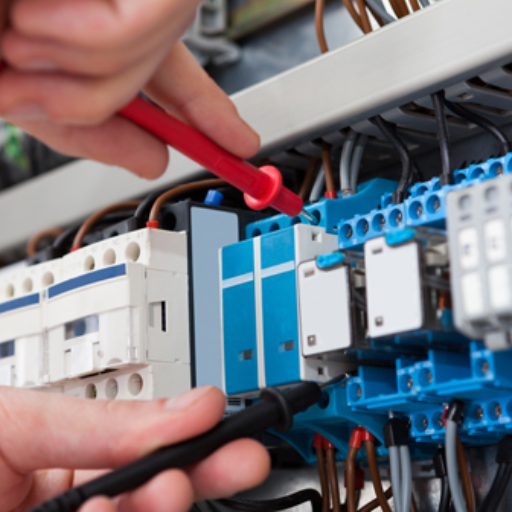Rated voltage is a term that is frequently encountered with electrical devices and equipment, but what exactly does it mean and why is it so significant? It is really a necessity when one is answering the right components, making sure that safety is provided and that performance is optimized in any electrical system. Thus, this blog post will be your all-inclusive guide to rated voltage, which covers everything from the definition and importance to practical applications and the risks of exceeding it. We will simplify this critical topic into small, easily comprehensible, and insightful pieces. Whether you are an expert in electronics or just a curious person, you will find this article helpful in terms of acquiring the knowledge you seek.
Defining Rated Voltage

Rated voltage is the upper limit of the voltage a device or an electrical system can safely be under normal working conditions. It not only guarantees the proper functioning of the equipment without the danger of damage or breakdown but also makes it work in the most efficient way possible. Overstepping the rated voltage can result in various problems, such as insulation breakdown, overheating, or even the failure of the whole system, thus necessitating adherence to the rated voltage specified for the safety and reliable performance of the equipment.
What is Rated Voltage?
Rated voltage is one of the most essential characteristics of electrical circuits; it sets the maximum voltage the device or system is designed for. The value of the rated voltage is determined through extensive testing by the manufacturers who want to provide safe and efficient products. For example, household appliances typically have rated voltages of either 120V or 240V that depend on the standards of the region they are in. Going beyond or below the rated voltage will either reduce the appliance’s efficiency, cause it to overheat, or, in the worst case, damage it. In industry settings, too, giving matching specifications of the equipment and the power supply becomes easier if the rated voltage is taken into consideration, thus making the operation smooth and the equipment reliable for a long time.
The Importance of Rated Voltage
Rated voltage is a product of many factors customized to the unique operational needs and safety requirements of different electrical systems. The strength of the insulation on wires is one of the material properties that can determine the maximum voltage a component can safely handle without breakdown. Wires and other components are subjected to different environmental conditions, such as temperature and humidity, that can affect their lifetime and, therefore, influence the safe voltage ranges. Engineers estimate the load characteristics to ensure that the devices are operated in the most efficient mode of usage during their everyday use. Following the painstakingly calculated rated voltage limits closely helps manufacturers avoid the possibility of electrical faults, the premature aging of the equipment, and wasted electricity, thus contributing to the overall safety and cost-effectiveness in power consumption for households, commerce, and industry alike.
How Rated Voltage Affects Electrical Systems
Rated voltage has a significant impact on the electrical performance and the reliability of the systems. The operation of the electrical devices inside was the moment that the rated voltage was proportioned, thus lowering the risk of overheating and malfunctioning. For instance, when an appliance’s rated voltage is exceeded, it might suffer insulation failure, short circuits, or even fires as opposed to the case of its rating being under-voltage which leads to inefficiency or inferior. Also, voltage regulation technology has made huge strides, and it has become very modern as well as very capable of maintaining voltage levels precisely throughout the electricity network, which results in the protection of the equipment and the support of the energy efficiency of the whole network. Moreover, the compliance with voltage rating standards goes alongside the compatibility of interlinked systems, e.g., power grid, where the fluctuations can cause disruption of the sensitive equipment functions and result in expensive nonproductive time.
Understanding Voltage Types

The voltage can generally be classified into two categories: Direct Current (DC) and Alternating Current (AC). The DC voltage has a continuous flow in one direction, which makes this kind of current suitable for batteries and low-voltage electronics. AC, on the contrary, is the periodic direction reversal of the flow, which is very efficient for long-distance electricity transmissions and is obtrusively present in household and factory power supplies. One cannot understand the ready-to-use characteristics of the DC and AC voltages without knowing the differences and knowing implicitly that this is the criterion for selecting the type for specific applications, thus guaranteeing performance and reliability.
Nominal Voltage Explained
Nominal voltage is the reference voltage level meant to be in, for electrical systems or devices, which is reflective of the voltage that will be their intended operating range under normal conditions. It is a line that, since no one is going beyond it, guarantees the compatibility and safety of electrical systems, since the equipment is operating reliably and can work well. For example, 120V or 240V, according to the area, are the most common voltages used in the residential sector, depending on the region. In contrast, the automobile area uses a very stable nominal voltage of 12V. Loads and transmission losses are some of the factors that can cause the actual voltage to vary slightly from the nominal; however, the nominal voltage remains the critical reference point for the electrical engineering design, manufacturing, and usage standards. Conveying the importance of the nominal voltage: one cannot easily imagine setting an abode of devices that are all tucked in the safe operating area if it weren’t so dedicated to making it more accessible through drawers or hiding spots.
Operating Voltage: Definition and Importance
Operating voltage is the term that indicates the voltage level that is considered safe and effective for electric and electronic devices to operate. It is different from nominal voltage in the sense that nominal voltage is a reference point that is basically a standard. Operating voltage range takes real-world conditions into account, including minor voltage fluctuations and variations of voltage that are caused by environmental factors or load changes. Issues like overheating, energy inefficiency, or even component destruction can be avoided by keeping the voltage within the proper range. An example of this can be seen in the case of many appliances where operating voltage is often set to a certain tolerance of the grid supply, for instance, 110-120V in North America or 220-240V in most of Europe. Moreover, modern technologies such as voltage regulation and intelligent monitoring systems have made it possible to operate the devices in their safe range, thus minimizing the risks involved and making the devices more reliable overall.
Difference Between Rated Voltage and Nominal Voltage
| Key Point | Rated Voltage | Nominal Voltage |
|---|---|---|
| Definition | Maximum voltage a device tolerates | Approximate voltage for system operation |
| Purpose | Ensures device safety and performance | Defines standard operating voltage levels |
| Applicability | Device-specific | System-wide |
| Variations | Fixed for a specific device | May vary with location or standards |
| Example | 230V for an appliance | 220V in European power systems |
| System Tolerance | Device cannot exceed this limit | Includes a safe margin of variation |
| Impact of Overload | Risk of damage or failure | Minor performance fluctuations |
| Specification Source | Manufacturer’s guidelines | Power network and system standards |
| Measurement Units | Volts (V) | Volts (V) |
| Practical Use | Equipment design and rating | Grid-level power distribution setup |
Voltage Range Considerations

Inspecting voltage ranges is a decisive task that is fundamental to checking whether the power supply and equipment being used are compatible. Where appliances have been designed to work with 230V, they may not only be inefficient if operated outside their rated range but also prone to dangers and possible damage. The European power system, connecting 220V, is also on the safe side as it allows for minor fluctuations. It would be wise to refer to the manufacturer’s guidelines and double-check that the voltage range being used is within the permissible limits to eliminate the risk of poor device performance or system failure. Safety should always come first, which means following the norms and standards of energy safety to ensure the best possible operating performance of the device and the system as a whole.
What is Voltage Range?
Voltage range, in simple terms, is the scope of the minimum and maximum voltage that electrical devices and equipment can safely work with. This area is actually significant for the reliability and performance of the devices, as well as for the damage that might be caused due to under-voltage or over-voltage conditions. For example, a wide variety of appliances in homes are set to match a single voltage, e.g., 110-120V in America, or in most of Europe and Asia, 220-240V. The allowed voltage range is different from one area to another and from one equipment to another; thus, it is crucial to ensure compatibility with the local power system. To conform with the voltage range recommended, not only will the equipment be protected, but also electricity consumption will be minimized, and safety risks will be nearly zero.
How to Determine the Voltage Range for Devices
The first thing to do is find out which voltage inputs your device can accept. Usually, it is written in the label near the power input or the cord or in the user manual. Most of the time, you’ll find the “Input Voltage” number or “Voltage Range” consisting of one number, for example, V. At the same time, many devices of today are made to have a wide acceptance range of voltages and are marked with “dual voltage” (i.e. 100-240V) so they can be used in different places, too.
If the voltage information is not very clear, you can go to the manufacturer’s site for the device’s technical specifications. For products intended for the world market, this information is usually included in the product description or downloadable manuals. When buying new devices, consider their power compatibility and don’t bother about voltage converters if you travel a lot. Also, think about purchasing a voltage tester or an adapter with surge protection to keep your electronics safe when you connect them to the strange power systems.
Impact of Voltage Range on Device Performance
The performance and lifespan of devices depend significantly on the specific operating voltage ranges, and any off-spec operation can drastically reduce the performance and longevity of the devices. Electronics subjected to voltages not within range may behave erratically, be inefficient, or even get damaged beyond repair. As an example, the devices under high voltage may get overheated or their circuits may fail. In contrast, insufficient voltage leads to underpowering, which can result in sluggish performance or unintended shutdowns. A good number of contemporary electronics contain voltage regulation systems as part of their design to mitigate these risks. Yet, it is still essential to know the voltage compatibility of your device. It has been documented that operating consistently within the prescribed voltage range not only secures the most favorable performance but also prolongs the device’s life. Furthermore, the use of correct surge protectors and voltage converters can help shield sensitive electronics from unpredictable power fluctuations.
Practical Applications of Rated Voltage

The rated voltage has a significant impact on the smooth and safe running of electrical devices and systems. To illustrate, the appliances in common use are built to run in a certain voltage range for efficiency and protection. The same goes for the industrial equipment, where the right voltage is essential for keeping the production going and avoiding a period without production that is expensive. The rated voltage is equally vital in the distribution network design, which helps the power system engineers choose the right elements for the system like transformers and circuit breakers. By following the stated voltage requirements, both safety and machine reliability are in a big way promoted to the extent of drastically reducing the occurrence of failures and catastrophes.
Rated Voltage in Batteries
Batteries are types of devices requiring some rated voltage that they work well at, and it is this value which is one of the most significant factors affecting not only battery operation, but also their compatibility with various devices. The rated voltage of a battery is the voltage it is supposed to provide if it is functioning properly and at a normal condition. A good example is the commonly used primary cell alkaline battery that has a rated voltage of 1.5 volts, whereas a lithium-ion battery has a rated voltage of 3.7 volts. The voltage levels are strictly set to be compatible with a wide range of consumer electronics, industrial equipment, and automotive applications. In addition, changes in voltage that are out of the rated voltage can decrease the effectiveness and life of a battery, so that the rated voltage has to be adhered to by the battery to make the latter perform well. And, the knowledge of the rated voltage is crucial for the realization of energy storage systems that are not only strong in terms of power output but also safe and durable.
Rated Voltage in Resistors
The rated voltage of a resistor denotes the maximum voltage that the component can accept safely without damaging it. It is a very significant feature to consider when designing and selecting resistors for different electrical and electronic circuits. In case the rated voltage of a component is exceeded, the component might get too hot, the material loos,or the resistor breakdown might compromise the overall integrity of the circuit.
Rated voltage is a function of the material, design, and physical size of the resistor. For instance, the bigger the resistors the higher the voltage can be handled because of the more surface area which can dissipate the heat and also the robust construction. Mostly rated voltage for resistors differs with their power rating standard resistors can handle hundreds of volts at the same time specialized high-voltage resistors are designed for the kilovolt range. Properly matching a resistor’s rated voltage to the application’s requirements makes an electrical system to be the safest, most efficient, and reliable among others.
Comparing Rated Voltage vs Other Voltage Measurements
| Voltage Type | Definition | Key Characteristics | Applications |
|---|---|---|---|
| Rated Voltage | Maximum voltage resistor can handle safely. | Ensures reliability and safety. | Power systems, electronics. |
| Supply Voltage | Voltage provided by the power source. | Determined by power system design. | Powering electrical devices. |
| Breakdown Voltage | Voltage causing insulation failure. | Exceeds material’s dielectric strength. | Critical in high-voltage systems. |
| Peak Voltage | Maximum instantaneous voltage in a cycle. | Appears in AC waveforms. | AC systems, signal analysis. |
| Nominal Voltage | Approximate designated voltage for devices. | Used for standardization. | Batteries, consumer electronics. |
| Operating Voltage | Voltage a device operates under normal use. | Below rated voltage for safety. | General circuit operation. |
| Step Voltage | Voltage increase between points in a system. | Relevant in grounding studies. | Safety in earthing systems. |
| Transient Voltage | Temporary voltage spikes in a system. | Can damage circuits. | Surge protection design. |
Summarizing the Significance of Rated Voltage

Voltage rating is a critical consideration for the safe and effective operation of any electrical equipment or system. This quantity determines the maximum voltage under which the performance of a device is not going to be impaired or the device is not going to break. The standardization of the power performance by manufacturers, the boost of the reliability, and the prolongation of the life of the equipment are all straightened up by adhering to the rated voltage. Moreover, it also helps the consumers and the engineers in the process of application and the selection of the proper elements thus guaranteeing the compatibility and the safety among the electrical systems.
Key Takeaways for Electrical Systems
- Rated Voltage: It is essential to understand and follow the rated voltage of a device to ensure its safe and efficient operation. This way, damage prevention, reliability enhancement, and the prolonged life of electrical equipment are practiced.
- Compatibility: The selection of components with the same voltage rating as they are is compatible; the power rating decreases in people’s devices, and, subsequently, the risk of electrical malfunctions or failures is reduced.
- Safety Standards: Compliance with the rated voltage and other specifications designed to align with safety standards ultimately reduces the chances of accidents in both residential and industrial settings.
- Energy Efficiency: Electrical systems that are properly rated are a significant contributing factor in energy efficiency, as they cause less energy loss when distributing power to the optimum level.
- Advancements in Technology: One, the existence of modern innovations that make electrical systems easier to adapt to, and two, the introduction of voltage regulation and intelligent monitoring solutions, which are the things that can additionally improve the safety, performance, and environmental friendliness of energy consumption.
Further Reading and Resources
- National Electric Code (NEC) – A full-scale electricity-related knowledge source that encompasses the US standards and practices for the electrical design process, the setup, and the servicing of the systems. Through technology and safety rules enforced rightfully, the document is kept up-to-date.
- Energy Information Administration (EIA) – It is the one to provide us with a full-blown portrayal of energy productivity, environmental impact due to the use of energy, and the future of energy sources. At the same time, it does not fail to underscore the contribution of electrical systems towards the worldwide energy conservation effort.
- Institute of Electrical and Electronics Engineers (IEEE) – The IEEE Library is a good place to get research papers, the latest technology publications, and IEEE standards that are specifically on excellent electrical engineering technology and innovations.
- Smart Grid Technology Resources – Look up literature and case studies on modern electrical grids, showing the real-world implementations of the intelligent monitoring and voltage regulation system.
- Occupational Safety and Health Administration (OSHA) – You can access and learn the Resource materials that deal with workplace electrical safety.
Acquainting oneself with these resources is highly advisable if one wants to master electrical systems; in addition, it helps one keep abreast of technological improvements and safety standards through practice.
Reference Sources
Advantage Power Transformer Low Losses with a Case Study
Key Findings: This study examines a 30/60 MVA transformer with a voltage rating of 150/20 kV, focusing on reducing power losses. It highlights the benefits of advanced transformer designs in improving energy efficiency and reliability.
Decentralized Voltage Regulation through Optimal Reactive Power Flow
Key Findings: This paper proposes a decentralized voltage regulation strategy using distributed energy resources (DERs) as autonomous regulators. It demonstrates how optimal reactive power flow can minimize voltage fluctuations and improve grid stability.
Frequently Asked Questions (FAQs)
Voltage and nominal voltage are two concepts that have a very close relationship with each other in any electrical system. The term “Nominal voltage” means a specific or average voltage, which is considered the center of the system and around which it operates. In contrast, “voltage” can be the actual voltage that the system has at any time. The rated voltage, that is, what the load is designed to work with and still operates within the system, is frequently chosen to be the nominal voltage. In illustration, in the context of a household electrical power system, a hypothetical case of assigning a 230V nominal voltage could also mean that a rated voltage range would allow for slight, unavoidable, up or down changes. By being aware of this difference, one can utilize such knowledge for the furtherance of the quality and safety of electrical appliances.
Several consequences can occur in case the operating voltage exceeds the rated voltage. Firstly, the device’s functionality may become unpredictable, and its continuous operation at a higher voltage level may cause damage that is not reversible. The reason for the existence of voltage ranges in the specifications of the electronic devices, for instance, is the electrical components such as resistors and batteries. When the voltage level is exceeded, these components may either heat up or fail. To give an example, abuse of a resistor rated for 300 V should be prevented by all means, as the correct operating voltage is quite essential for the devices in your house, electrical equipment, for the period of their life, and reliability.
To test the rated voltage of a battery, a multimeter is used to check the voltage between the terminals. The first thing we do when we test the voltage of the battery is to check whether it is fully charged or not, and connected correctly. Then the multimeter should be set to the voltage measurement mode that is usually given as volts (V). Get the positive lead on the positive terminal and the negative lead on the negative terminal of the battery. The reading is the voltage of the battery, which should be the same as the battery’s rating, ideally. Much less reading may tell us that the battery is weaker and might have to be replaced.
The rated voltage range plays a crucial role as it sets the boundaries within which the appliances can safely operate. This range informs the application of the highest and lowest voltages that will not jeopardize the product. By way of an example, the rated voltage range is often assigned to the electronic components to show how they can work properly under different circumstances. There are many cases when the outside operations bring the situation to failure or not the same life duration anymore. It is thus essential that these limits are known to engineers and technicians so that they can assign the correct voltage levels when installing and operating.
